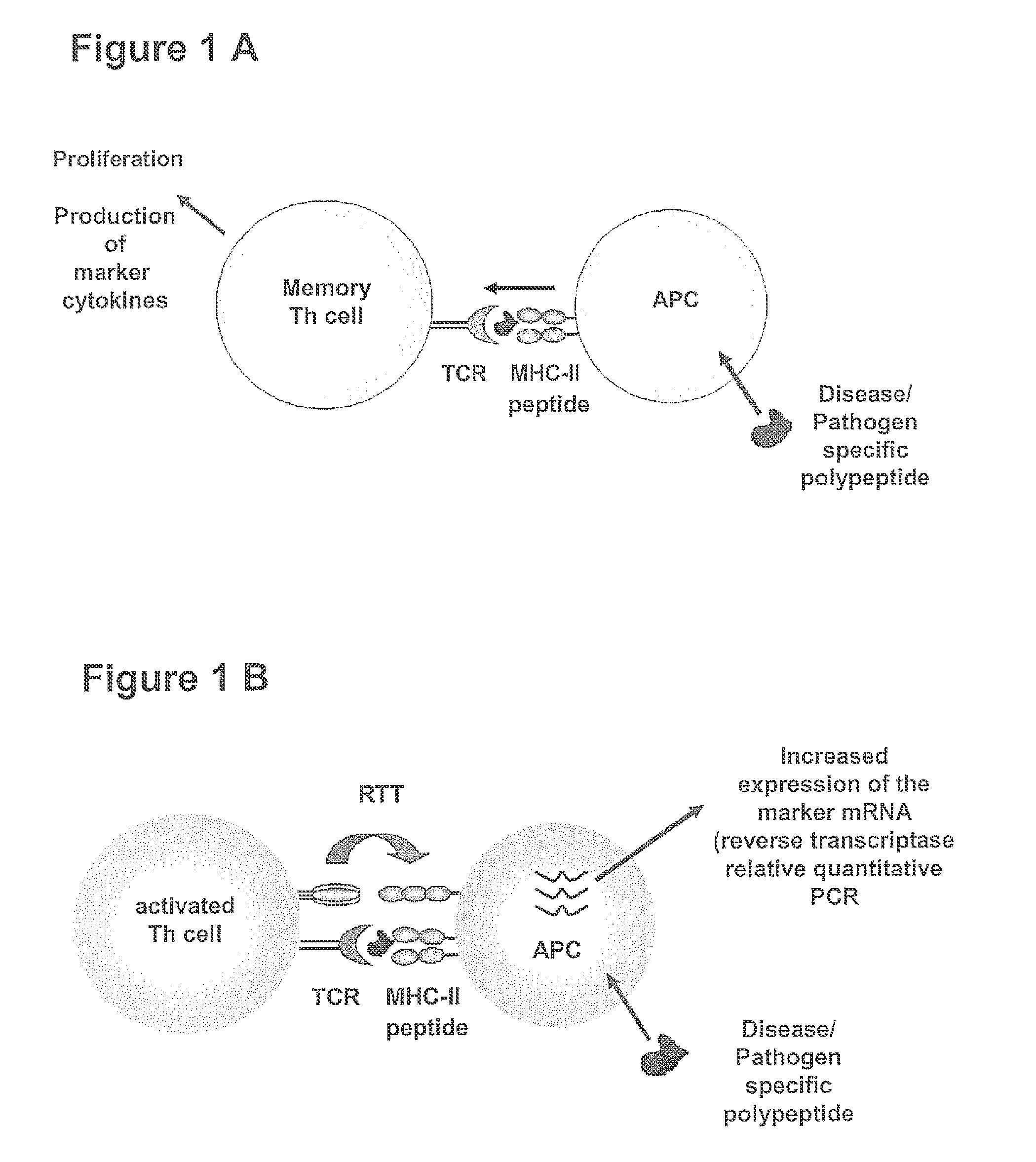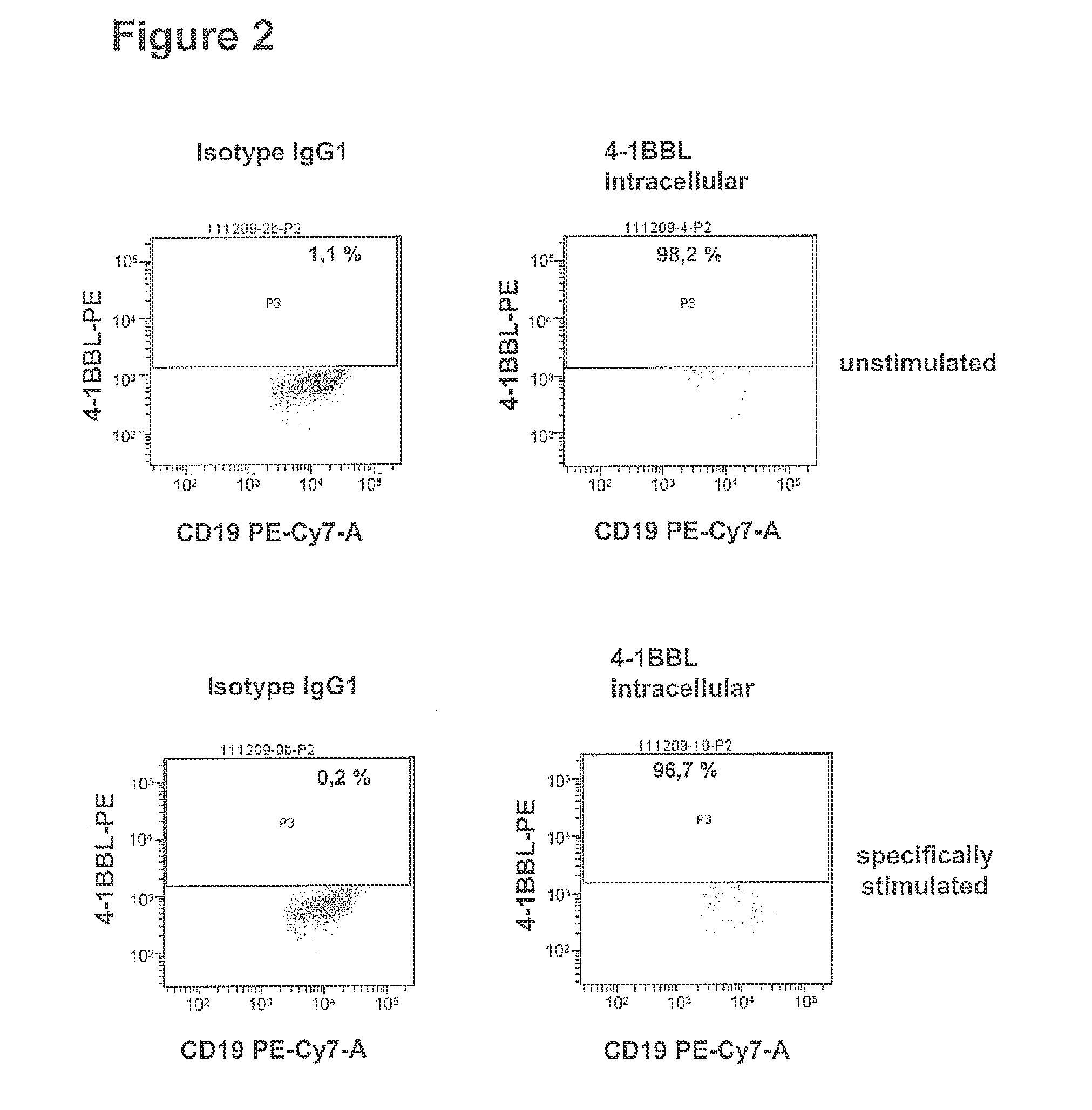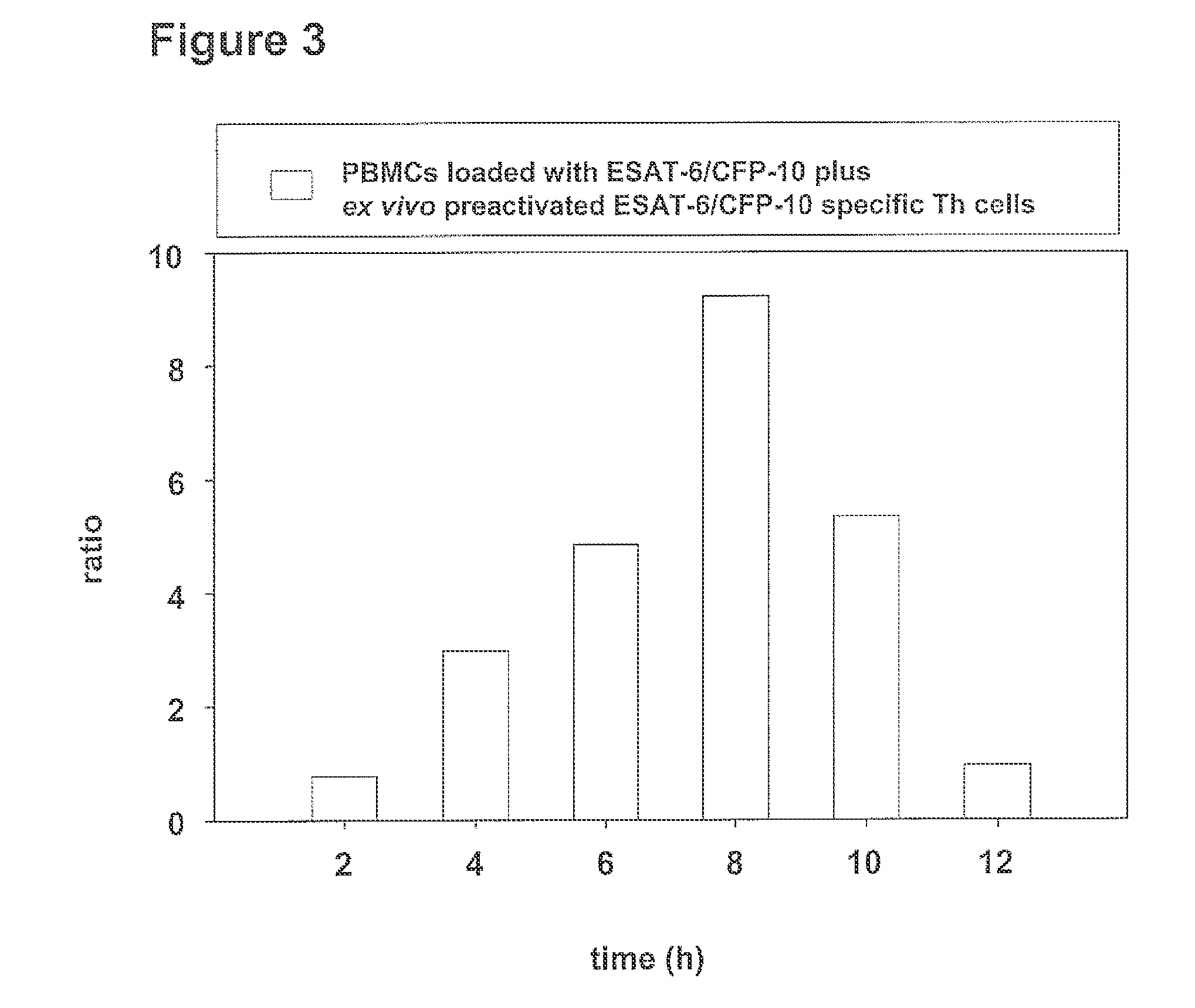METHOD FOR DETECTION, DIFFERENTIATION AND QUANTIFICATION OF T CELL POPULATIONS BY WAY OF REVERSE TRANSCRIPTION QUANTITATIVE REAL TIME PCR (RT-qPCR) TECHNOLOGY
a t cell population and reverse transcription technology, applied in the field of methods for detection, differentiation and quantification of t cell populations, can solve the problems of inability to analyze the functionality of t cells, insufficient development of protective mechanisms, and routine monitoring of peptide mhc multimeres
- Summary
- Abstract
- Description
- Claims
- Application Information
AI Technical Summary
Benefits of technology
Problems solved by technology
Method used
Image
Examples
examples
[0142]In a preferred embodiment of the invention it is envisaged, that the kit comprises furthermore primer, which allow the detection of markers of the APC by PCR, qPCR or mircoarray.
[0143]In the following the invention is illustrated by the subsequent examples. These examples are to be considered as specific embodiments of the invention and shall not be considered to be limiting.
[0144]In order to establish the method for detection, differentiation and quantification of specific T cell populations, such as activated T cells, T cell induced maturation processes in antigen-presenting cells (APC) were analysed. For this purpose a cell culture model was developed, which is based on the coculture of antigen-loaded APC with ex vivo expanded, activated antigen-specific T helper cells. In this model system cocultures of (i) unloaded APCs or of APCs loaded with an irrelevant antigen with pre-activated antigen-specific T helper cells and (ii) antigen-loaded APCs with un-specifically activate...
example 2
Correlation of Induction of 4-1BB Ligand mRNA Production in Cocultures of ESAT-6 / CFP-10 Protein-Loaded PBMCs with the Number of Ex Vivo Expanded ESAT-6 / CFP-10 Protein-Specific Th Cells
[0152]ESAT-6 / CFP-10 specific Th cells of subjects latently infected with Mycobacterium tuberculosis were expanded ex vivo as described in example 1 under item a) and were subsequently cocultured with freshly prepared autologous PBMCs as described in example 1 under item b). In this process the number of ESAT-6 / CFP-10 specific Th cells cocultured with 1×106 PBMCs was titrated in a semi logarithmic concentration series (concentration steps: none, 117, 370, 1170, 3700, 11700, 37000, 117000 preactivated Th cells per 1×106 PBMCs). After 0; 0.5; 1; 2; 3; 4; 6; 8 and 10 hours of incubation 2×105 cells were removed, pelleted for 5 min at 300 g and the pellet was immediately frozen in liquid nitrogen. Until further use the cells were stored at −80° C. The total RNA was isolated according to the protocol in exam...
example 3
Induction of 4-1BBL as Well as of IFN-γ mRNA Production in Cocultures of Non-Stimulated and of with ESAT-6 / CFP-10 Stimulated PBMCs and of Autologous Ex Vivo Preactivated M. tuberculosis ESAT-6 / CFP-10 Specific Th Cells
[0154]ESAT-6 / CFP-10 specific Th cells of patients latently infected with Mycobacterium tuberculosis were expanded ex vivo as described in example 1 under item a) and were subsequently cocultured with freshly prepared autologous PBMCs as described in example 1 under item b). in this process 50,000 ex vivo preactivated ESAT-6 / CFP-10 specific Th cells were cocultured with 1×106 PBMCs. In intervals of 2 hours over a period of from 0 to 32 hours 2×105 cells were removed in each case from the culture sample, pelleted for 5 min at 300×g and the pellet was immediately frozen in liquid nitrogen. Until further use the cells were stored at −80° C. The total RNA was isolated according to the protocol in example 1 under c) and analysed in the RT-qPCR with respect to the production o...
PUM
| Property | Measurement | Unit |
|---|---|---|
| Time | aaaaa | aaaaa |
| Time | aaaaa | aaaaa |
| Time | aaaaa | aaaaa |
Abstract
Description
Claims
Application Information
 Login to View More
Login to View More - R&D
- Intellectual Property
- Life Sciences
- Materials
- Tech Scout
- Unparalleled Data Quality
- Higher Quality Content
- 60% Fewer Hallucinations
Browse by: Latest US Patents, China's latest patents, Technical Efficacy Thesaurus, Application Domain, Technology Topic, Popular Technical Reports.
© 2025 PatSnap. All rights reserved.Legal|Privacy policy|Modern Slavery Act Transparency Statement|Sitemap|About US| Contact US: help@patsnap.com



